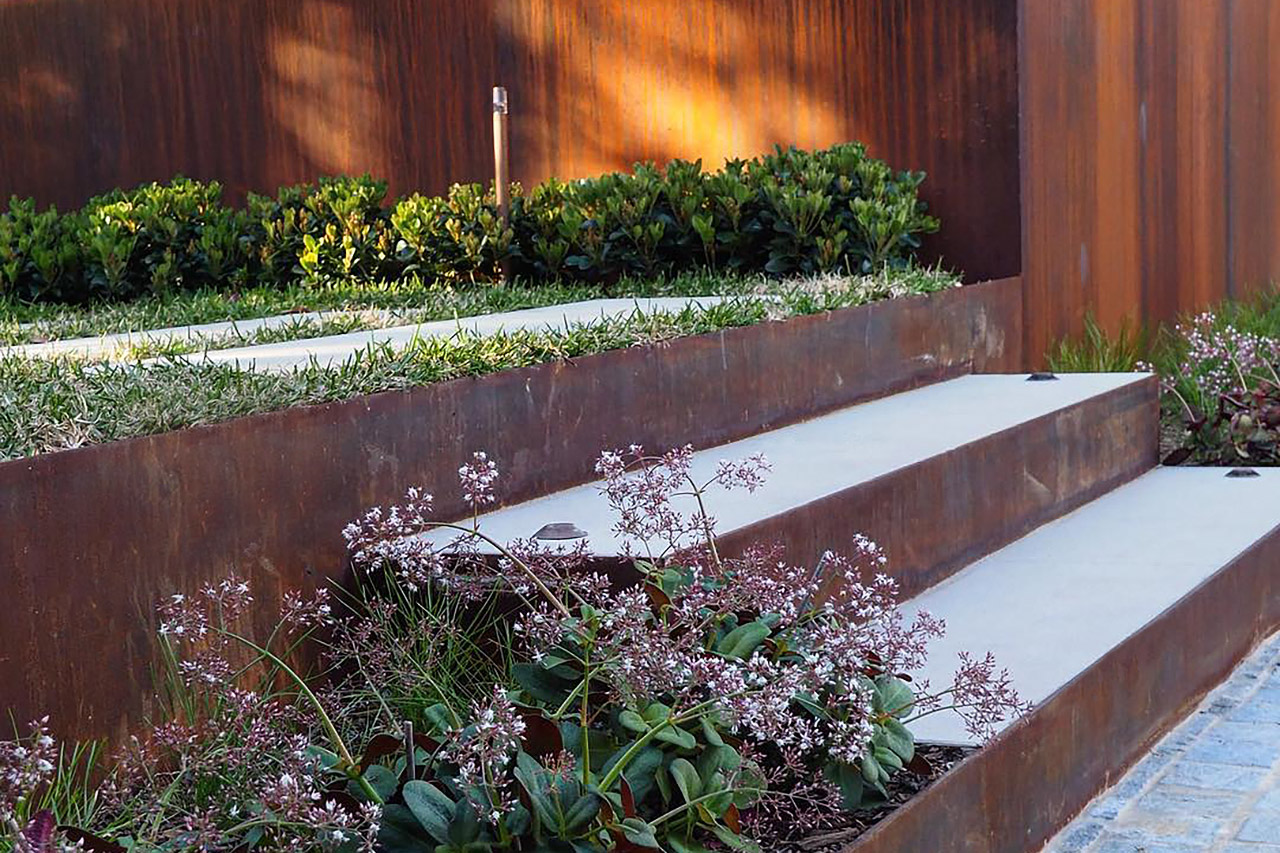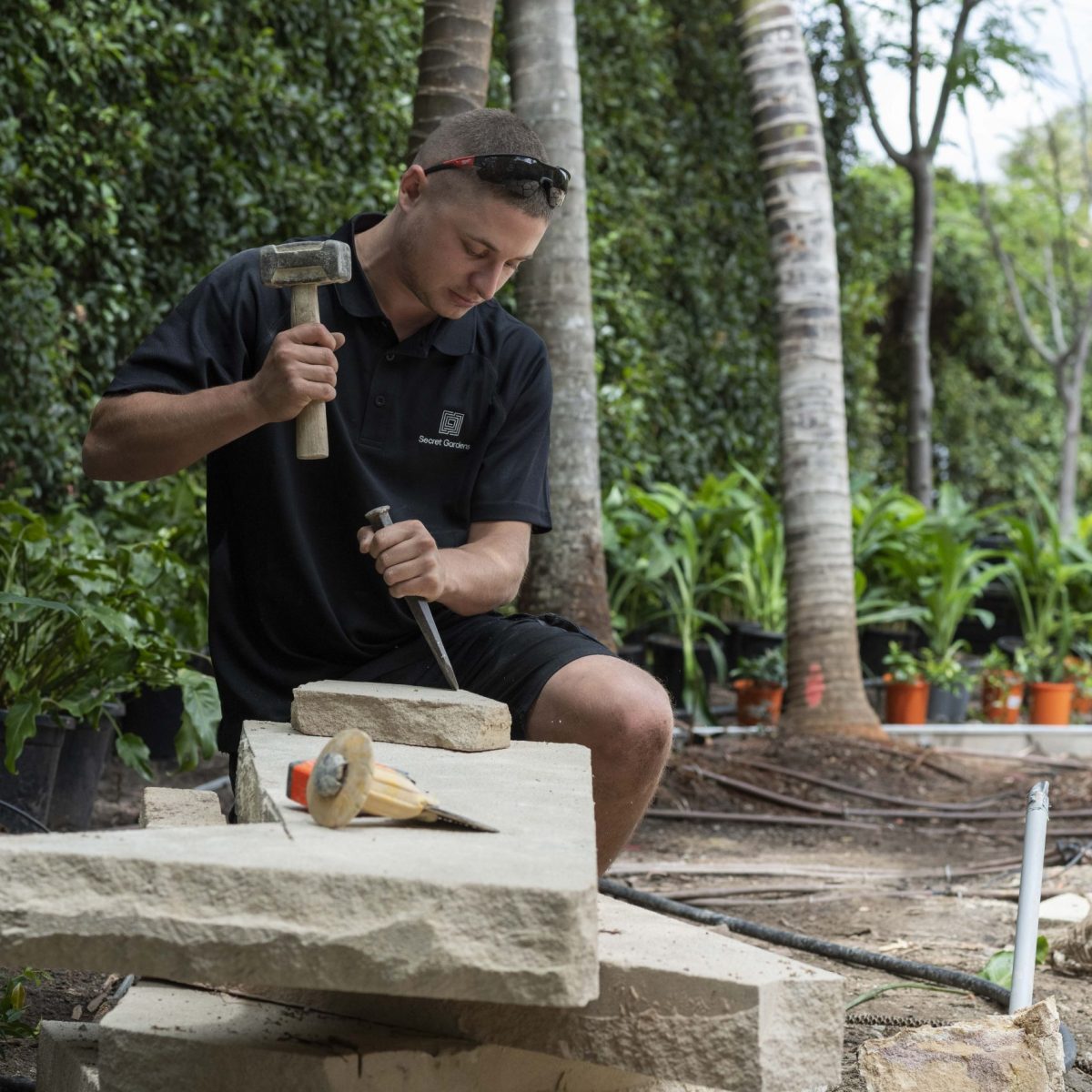Cutting-edge edging
Traditional gardens simply featured a spade-cut edge, with a slight dip to prevent the lawn encroaching on the garden bed, while gardens of the eighties used garden edging – bricks and pavers – as a decorative statement. In contrast, modern garden beds have much softer edges, with plants fluffing right over the edge of the lawn and, ideally, not a speck of mulch in sight. To prevent the lawn from racing through the garden or the plants inching too far over the grass, we do use edging to define the beds, but on-trend edging is never seen. We usually use 6mm-10mm-thick steel, discreetly buried to keep garden and lawn in check, without drawing focus away from the real visual heroes of the garden.

Raised versus flush edging
Aside from being on-trend, flush edging is so much more practical than raised edges. A vertical edge bordering lawn is going to be a maintenance nightmare – you can’t mow right to the edge, leaving a difficult and messy job for a whipper snipper. Raised-edge garden beds can also visually shrink a space, which is particularly detrimental (and sadly, common) in courtyard gardens and the like.
That said, a raised edge in a statement material, like sandstone, can look good bordering a path and occasionally, if we’re working with an older garden that already has brick edging, we might continue this for consistency – though likely contrasted with a more modern flush steel edge elsewhere.
In a modern setting, we’ll also sometimes use steel edges as small retaining walls or step risers, 300mm-400mm high. This is technically edging, but edging as an architectural feature in a garden.

Garden shapes
Straight lines rule in formal gardens, but informal gardens invite rounded edges and sweeping curves – an effect, incidentally, that is much easier to achieve with modern steel edging. We’re big fans of a curved garden bed, which is a softer, more romantic style and contrasts beautifully with the sharper lines of a contemporary home.
Curved garden beds are also brilliant for disguising odd shapes and awkward corners – common features of gardens, especially in Sydney, where no two blocks of land are the same. Square-edged gardens do nothing but highlight an oddly shaped block, while a curved bed (and some clever layering of plants) does a much better job of disguising it.



